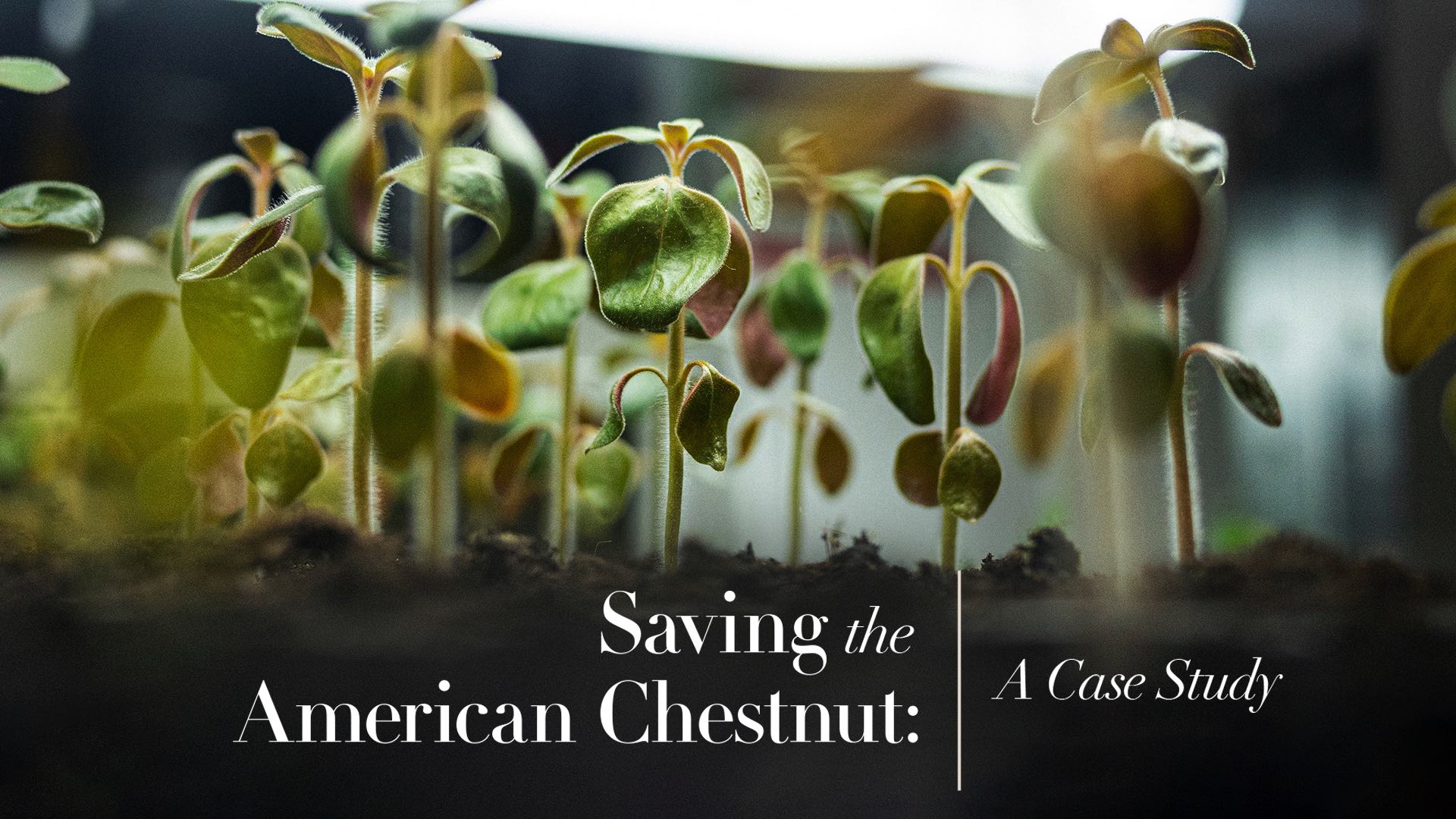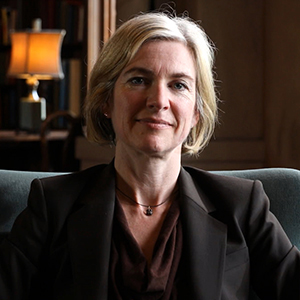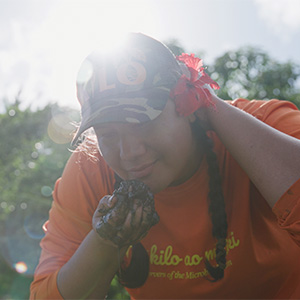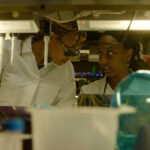Jack Wang, Ph.D.: Trees are very complex organisms that have evolved over millions of years. They function as giant filters that purify the air and water providing a sustainable habitat that allow all forms of animals and plants to survive. The magnificence and the greatness of the trees is simply breathtaking.
Doria Gordon, Ph.D.: In forests in particular we know that forests are tremendously important for biodiversity. 80% of the world’s biodiversity is supported by forests. We know that forests cover a huge proportion of the land surface in the US that’s about a third of the land is forested. And these systems provide everything for us from the air we breathe, to the wood and wood fiber that we use to the recreation for the wildlife habitat all of those elements are really important to healthy forests.
Jason Delborne, Ph.D.: Really forest health we have to admit that that’s a human construction. We can’t define forest health by a set of objective indicators. It really depends upon what we value and what that particular forest is for.
So for some people a healthy forest is one that is able to provide many different kinds of habitats different kinds of nutrients and food opportunities and shelter and different kinds of niches in the ecology of the forest to enable a great deal of biodiversity in the forest. In other ways we might think about forest health in terms of its ability to provide products for people.
Wang: Trees evolve very very slowly. Trees typically takes years to decades to mature and be able to propagate its offspring. So then for a tree to be able to adapt by natural evolution to a particular stress or a rapidly evolving changing environment it could take millions to tens of millions of years. This makes trees particularly susceptible to rapid changes in the environment, like changes in soils or changes in temperature.

Delborne: So climate change in many places causes more droughts and more heat stress for trees. We’re already seeing the impacts of different kinds of threats on forest health pests and pathogens droughts things like hurricanes or major storms. So as we build roads, as we cut down forests for variety of purposes, for housing for development, for transportation, that does threaten the forest health because it reduces the landscape that the forest is living on. And so as we reduce the amount of forests we’re both changing the environment of that forest, but we’re also potentially reducing the diversity in that forest.
A recent report showed that up to 25% of forests in the United States are threatened and could face major declines in the next 25 to 50 years. So the threats are real and they’re major. In Colorado when you drive into the mountains and you look up on the hillsides and you would see green with these huge splotches of brown. The brown wasn’t earth or ground it was dead trees. It was because of this pine beetle which is a native pest in the Western United States. But climate change has changed the number of times per year that this insect can breed.
And so instead of having one group of offspring from the pest each year they’re seeing two and other cases we’re seeing where the pests might be controlled by very very cold weather in the winter months, but if there aren’t enough days of really cold weather the larva survive. And so you don’t have what has traditionally been a way to keep those pest populations in check.

So this pine beetle isn’t just infecting the occasional tree. It’s really infecting entire stands of trees. Dead and dying trees are a greater fire hazard. When those trees do die or burn then there’s a greater chance for erosion. So something just as simple as a little beetle can have a huge impact on the health and even the geology of a particular region by having a major impact on tree health.
Gordon: The number of stresses that native species are now under from invasion from climate change from land conversion other activities are so great that if we want to build resilience into these systems we essentially need every tool in the box.
Delborne: So there’s a lot of possible interventions that we can make in response to threats to forest health that range from management in terms of how we take care of the forest. We may thin them in particular ways. We may harvest them. We may plant new species. In the face of climate change when we plant new species or reforest land we need to think not only what is the native species of this area of the world, but also possibly how is this region’s climate changing and how can we plant species that will be adapted to the climate that we expect in 25 or 50 or 100 years?
Wang: Without innovations without technological advances the existing and emerging issues that are happening right now in terms of climate change in terms of drought stress insects and pests will continue to have significant detrimental effects on the health and quality and resilience of trees. We have focused on developing innovative biological approaches that allow us to significantly accelerate the rate at which we can modify the genetic of trees in a safe and robust manner.
Delborne: We might be able to create traits or introduce traits into trees that would protect them.
Sofia Valenzuela Aguila, Ph.D.: We might even be able to generate trees that will be more tolerant to drought more tolerant to cold conditions.

Delborne: That grow faster or are structured differently to possibly hold more carbon.
Gordon: The role of biotechnology in forest health is more potential than real right now because we don’t have many examples of where that has actually been possible.
Delborne: I view climate change as an incredibly urgent threat. We’re already feeling the effects. So is genetic engineering appropriate in the face of that threat? And I would say probably in some cases. There may be ways that we need to use different kinds of molecular techniques to make trees more adapted to the changing environment, but that’s not a decision we should take lightly. I think we want to be quite cautious as we intervene in the complexity of ecosystems.
There’s a lot of different kind of questions and issues that we need to confront. Those are not just scientific questions about the ecology of the forest or how fast a tree grows or how quickly we can sell the tree. There’s questions about our visions for the landscapes that we want to inhabit. We also have to recognize and be humble in the face of the complexity of our ecosystems and our global climate. There’s a lot of things that we don’t know yet.

Gordon: Of course we need to protect the remaining forest. It’s much harder to build a forest from scratch than it is to protect an existing forest.
T.D. Ramsfield, B.J. Bentz, M. Faccoli, H. Jactel, E.G. Brockerhoff, Forest health in a changing world: effects of globalization and climate change on forest insect and pathogen impacts, Forestry: An International Journal of Forest Research, Volume 89, Issue 3, July 2016, Pages 245–252
National Academies of Sciences, Engineering, and Medicine. 2019. Forest Health and Biotechnology: Possibilities and Considerations. Washington, DC: The National Academies Press.
Sarah Goodwin: Executive Producer
Elliot Kirschner: Executive Producer
Shannon Behrman: Executive Producer
Rosa Veguilla: Producer
Nona Griffin: Producer, Editor
Rebecca Ellsworth: Editor
Derek Reich: Videographer (forestry footage)
Eric Kornblum: Videographer (interviews)
Chris George: Design and Graphics
Maggie Hubbard: Design and Graphics

















